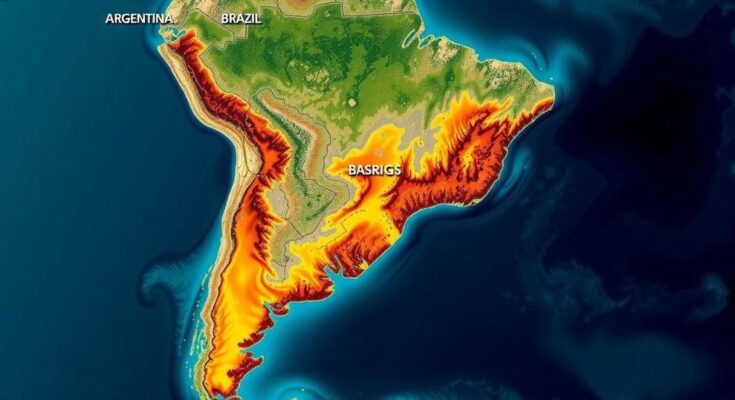Argentina and southern Brazil are experiencing a drier phase following recent intensive rainfall, which considerably eased drought conditions in western Argentina, particularly in key agricultural areas like Cordoba. While southern Brazil capitalized on this rainfall, forecasts indicate continued dry weather through early November, with early crops likely able to manage a temporary lack of moisture. Predictions suggest a return of rainfall thereafter, and the potential influence of La Niña on future conditions poses ongoing concerns for crop health and yield in the coming months.
South America is currently experiencing a notably drier period after an earlier spell of heavy rainfall, specifically in Argentina and Southern Brazil. Initially, Argentina faced significant drought conditions that plagued the early stages of the 2024-25 growing season, leaving many areas, particularly in the west, without rain for several months. However, a recent storm system, which began two weeks ago, ushered in the wet season and brought much-needed precipitation to both Argentina and southern Brazil. During the last fortnight, regions within western Argentina, particularly the state of Cordoba—a vital agricultural zone—received considerable rainfall, surpassing 75 millimeters and, in some places, exceeding 150 millimeters. Conversely, rainfall distribution was not as beneficial in the far southern or eastern territories, with selected areas remaining dry despite having adequate soil moisture beforehand. Meanwhile, southern Brazil, which did not endure the same level of dryness, enjoyed substantial rainfall, with accumulations ranging from 50-100 millimeters. This precipitation enabled farmers to maintain a steady planting schedule for corn and soybeans and cultivated favorable early growing conditions. As of now, following the conclusion of the storm system on October 24th, the region has entered a phase of relative dryness. Forecasts suggest minimal rain until November 1, allowing producers to progress with planting and winter crop harvest without immediate concern. The adequate topsoil moisture levels and the resilience of early crops should withstand a temporary lack of rainfall.
The agricultural landscape of Argentina and southern Brazil is significantly influenced by climatic variations, primarily rainfall patterns. The onset of the 2024-25 growing season revealed alarming drought conditions across Argentina, particularly in the western regions that are crucial for crop production. However, a recent shift in weather patterns introduced substantial rainfall, alleviating some of the drought stress. The importance of consistent moisture for agricultural success during this period cannot be overstated, as crops rely heavily on rainfall for growth, particularly following dry spells. With changing weather forecasts predicting a potential return of precipitation, the agricultural sector remains apprehensively optimistic about its upcoming yield potential, with underlying concerns regarding drought patterns exacerbated by broader climate phenomena, including La Niña.
In summary, while Argentina and southern Brazil are currently navigating a drier stretch after beneficial rainfall two weeks ago, the outlook remains cautiously optimistic. The moisture received has significantly improved conditions for early crop growth, but the presence of underlying drought in some areas necessitates vigilance. The anticipated return of rainfall likely in early November will be critical for agricultural prospects, especially in light of the potential influences of La Niña on future weather patterns. Thus, continued monitoring of climatic conditions will be essential for farmers as they move through the planting and growing phases of the season.
Original Source: www.dtnpf.com




